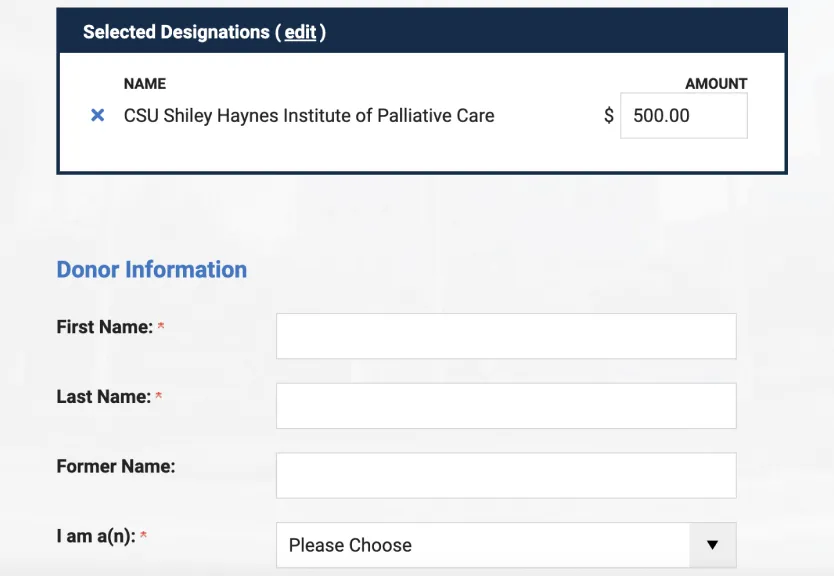Medical Cannabis Course Offers Information for Palliative Care Clinicians
As legalization, access, and utilization of cannabis-derived products for treating symptoms of illness continue to advance across the country, hospice and palliative care practitioners increasingly are asking themselves where these products fit into the palliative approach of treating symptoms and relieving suffering. Most say they don’t believe they are in a position to prescribe cannabis therapies, which remain illegal under federal regulation despite various forms of legalization by 43 states.
But can they still discuss, inform, suggest, or recommend cannabis products as complementary or adjuvant therapies for pain and other symptoms? Which products, and for which symptoms? And if they do, where are they getting the information to make informed and helpful recommendations?
One source is the CSU Shiley Haynes Institute for Palliative Care’s four-week, instructor-led course, “Medical Cannabis in Palliative Care,” which starts April 20. (Yes, April 20.) Recommended for doctors, physician assistants, advanced practice nurses, and registered nurses working in hospice, palliative care, and other serious illness settings, this course is offered mostly asynchronously and offers 12 continuing education credits (but not CME).
The course offers an introduction to cannabis medicine, what it does, and doesn’t do, types of products and formulations, and how to talk about them with patients and families, says Carma Erickson-Hurt, a doctor of nursing practice and consultant in palliative care education and development in Eugene, Oregon. She is one of the developers of the cannabis course.
“A lot of our patients in hospice and palliative care are using cannabis, and asking us about it,” she says. “A lot of us are not very educated about it, and so they go to the dispensaries and get whatever the dispensary staffer tells them to get.” There are questions about THC (tetrahydrocannabinol) vs CBD (cannabidiol) and about how to consume cannabis—gummies, liquid, tinctures or smoking. “A lot of patients have never taken it before and wonder what the effect will be,” Erickson-Hurt says. “How can we give good recommendations?”
No More Copping Out
For a long time, clinicians have said there is not enough high-quality medical research to address the safety, efficacy, and appropriateness of cannabis treatments. But in 2022, that answer is a cop-out, she says. “There is research out there. We now know much more about the body’s endo-cannabinoid system, and how cannabis receptors work. We may never have the high-quality research we want on cannabis.”
But for hospice and palliative care providers, their role is to support seriously ill patients on their journeys. “We need to know, for example, the side effects of chemotherapies taken by our patients and how to manage them. We should do the same for cannabis. If we don’t, we’re missing a huge part of our work. People are hungry for this information.”
The field is rapidly growing, says Vincent Nguyen, DO, who is the palliative program medical director at Hoag Hospital in Newport Beach, CA. He also helped develop the Institute’s cannabis course, which includes information about the legal framework, the different ways cannabis is used by patients, where they are getting it, the various products, and potential drug─drug interactions.
Partnering With Advocates
“Clinicians need trusted, credible information sources, which can be hard to come by. We need to advance our knowledge and practice to meaningfully address our patients’ concerns even if, as physicians, we can’t prescribe cannabis,” he says. “We need to know enough about it to help our patients.”
Dr. Nguyen says he has partnered with a special needs cannabis advocate, Mieko Hester-Perez, who is known for her advocacy work on behalf of her son, who is on the autism spectrum and has had experienced relief from medical cannabis treatments. “I encourage other clinicians to find someone they trust, who understands their treatment philosophy, and can provide information.”
Research on cannabis out of Israel and Germany, as well as results from a 2017 report from the National Academies of Science, Engineering and Medicine, The Health Effects of Cannabis and Cannabinoids: The Current State of Evidence and Recommendations for Research, offer direction for these explorations by palliative care clinicians.
The best available evidence, Dr. Nguyen says, is for using cannabis to treat chronic pain, nausea, and muscle spasticity in multiple sclerosis patients. It can also help with sleep anxiety, depression, anorexia, and appetite stimulation. “There’s a lot we don’t know, but a lot we do know. As palliative care physicians, we deal with people who are looking for hope. Our role is to provide hope—but not false hope,” he says. “We need to learn what’s out there as the medical cannabis industry evolves.”
Most recently, California enacted SB311, the Compassionate Access to Medical Cannabis Act, which now makes it legal for patients to use medical cannabis in health care facilities, including hospitals.
“I need to realize that I’m not doing my patients any favors by not learning more about this field. We should also be advocating for more standardized testing, such as for potency and contamination of these products, for the protection of our patients.”
He adds that medical cannabis now feels like a kind of Wild West, but palliative care practitioners need to be at the forefront of this frontier. “We should be leading the way in understanding how they can help our patients. We can be the leaders within our organizations.”




